Southerly 420
Sailboat specifications
The Southerly 420 is a 42’2” (12.86m) cruising sailboat designed by Humphreys Yacht Design (United Kingdom). She was built between 2010 and 2017 by Northshore (United Kingdom).
The Southerly 420 has also been marketed as Southerly 435.
The Southerly 420 has also been marketed as Southerly 435.
Southerly 420's main features
- Model
- Southerly 420
- Hull type
- Monohull
- Category
- Offshore cruising sailboat
- Sailboat builder
- Sailboat designer
- Sailboat range
- Country
- United Kingdom
- Construction
- GRP (glass reinforced polyester):
Single skin bottom, sandwich sides and deck: fiberglass vinylester vacuum bagged - First built hull
- 2010
- Last built hull
- 2017
- Appendages
- Lifting keel : swing keel
- Helm
- Single helm wheel
- Rudder
- Twin spade rudders
- Unsinkable
- No
- Trailerable
- No
- EC design categoryiThe CE design category indicates the ability to cope with certain weather conditions (the sailboat is designed for these conditions)
A: Wind < force 9, Waves < 10m
B: Wind < force 8, Waves < 8m
C: Wind < force 6, Waves < 4m
D: Wind < force 4, Waves < 0,5m - A
- Standard public price ex. VAT (indicative only)
- About459 000 €(2017)
Southerly 420's main dimensions
- Hull length
- 42’ 2”12.86 m
- Waterline length
- 36’ 6”11.11 m
- Beam (width)
- 13’ 2”4.03 m
- Draft
- 8’ 11”2.72 m
- Draft when appendages up
- 2’ 10”0.84 m
- Mast height from DWL
- 61’ 6”18.73 m
- Light displacement (MLC)
- 26015 lb11800 kg
- Ballast weight
- 7782 lb3530 kg
Southerly 420's rig and sails
- Upwind sail area
- 786 ft²73 m²
- Downwind sail area
- 1206 ft²112 m²
- Mainsail area
- 463 ft²43 m²
- Jib area
- 323 ft²30 m²
- Gennaker area
- 743 ft²69 m²
- Rigging type
- Sloop Marconi 9/10
- Mast configuration
- Deck stepped mast
- Rotating spars
- No
- Number of levels of spreaders
- 2
- Spreaders angle
- Swept-back
- Spars construction
- Aluminum spars
- Standing rigging
- 1x19 strand wire
Southerly 420's performances
- Upwind sail area to displacementiThe ratio sail area to displacement is obtained by dividing the sail area by the boat's displaced volume to the power two-thirds.
The ratio sail area to displacement can be used to compare the relative sail plan of different sailboats no matter what their size.
Upwind: under 18 the ratio indicates a cruise oriented sailboat with limited performances especially in light wind, while over 25 it indicates a fast sailboat. - 152 ft²/T14.08 m²/T
- Downwind sail area to displacementiThe ratio sail area to displacement is obtained by dividing the sail area by the boat's displaced volume to the power two-thirds.
The ratio sail area to displacement can be used to compare the relative sail plan of different sailboats no matter what their size. - 233 ft²/T21.61 m²/T
- Displacement-length ratio (DLR)iThe Displacement Length Ratio (DLR) is a figure that points out the boat's weight compared to its waterline length. The DLR is obtained by dividing the boat's displacement in tons by the cube of one one-hundredth of the waterline length (in feet).
The DLR can be used to compare the relative mass of different sailboats no matter what their length:
a DLR less than 180 is indicative of a really light sailboat (race boat made for planning), while a DLR greater than 300 is indicative of a heavy cruising sailboat. - 244
- Ballast ratioiThe Ballast ratio is an indicator of stability; it is obtained by dividing the boat's displacement by the mass of the ballast. Since the stability depends also of the hull shapes and the position of the center of gravity, only the boats with similar ballast arrangements and hull shapes should be compared.
The higher the ballast ratio is, the greater is the stability. - 30 %
- Critical hull speediAs a ship moves in the water, it creates standing waves that oppose its movement. This effect increases dramatically the resistance when the boat reaches a speed-length ratio (speed-length ratio is the ratio between the speed in knots and the square root of the waterline length in feet) of about 1.2 (corresponding to a Froude Number of 0.35) . This very sharp rise in resistance, between speed-length ratio of 1.2 to 1.5, is insurmountable for heavy sailboats and so becomes an apparent barrier. This leads to the concept of "hull speed".
The hull speed is obtained by multiplying the square root of the waterline length (in feet) by 1.34. - 8.09 knots
Southerly 420's auxiliary engine
- Engine(s)
- 1 inboard engine
- Engine(s) power
- 53 HP
- Fuel type
- Diesel
- Fuel tank capacity
- 76.1 gal288 liters
Southerly 420's accommodations and layout
- Cockpit
- Center cockpit
- Cabin(s)
- 2
- Berth(s) (min./max.)
- 4 / 6
- Head(s)
- 2
- Freshwater tank capacity
- 144 gal545 liters

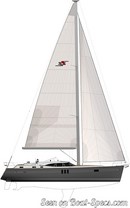

Northshore Southerly 420 sailplan - - 2/17
Picture extracted from the commercial documentation © Northshore
Picture extracted from the commercial documentation © Northshore


Northshore Southerly 420 layout - - 3/17
Picture extracted from the commercial documentation © Northshore
Picture extracted from the commercial documentation © Northshore


Northshore Southerly 420 layout - - 4/17
Picture extracted from the commercial documentation © Northshore
Picture extracted from the commercial documentation © Northshore


Northshore Southerly 420 sailing - - 5/17
Picture extracted from the commercial documentation © Northshore
Picture extracted from the commercial documentation © Northshore


Northshore Southerly 420 sailing - - 6/17
Picture extracted from the commercial documentation © Northshore
Picture extracted from the commercial documentation © Northshore


Northshore Southerly 420 sailing - - 7/17
Picture extracted from the commercial documentation © Northshore
Picture extracted from the commercial documentation © Northshore


Northshore Southerly 420 sailing - - 8/17
Picture extracted from the commercial documentation © Northshore
Picture extracted from the commercial documentation © Northshore


Northshore Southerly 420 sailing - - 9/17
Picture extracted from the commercial documentation © Northshore
Picture extracted from the commercial documentation © Northshore


Northshore Southerly 420 sailing - - 10/17
Picture extracted from the commercial documentation © Northshore
Picture extracted from the commercial documentation © Northshore
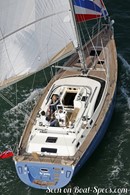

Northshore Southerly 420 sailing - - 11/17
Picture extracted from the commercial documentation © Northshore
Picture extracted from the commercial documentation © Northshore
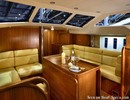

Northshore Southerly 420 interior and accommodations - - 12/17
Picture extracted from the commercial documentation © Northshore
Picture extracted from the commercial documentation © Northshore
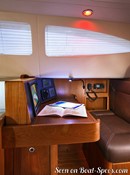

Northshore Southerly 420 interior and accommodations - - 13/17
Picture extracted from the commercial documentation © Northshore
Picture extracted from the commercial documentation © Northshore
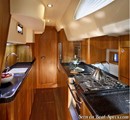

Northshore Southerly 420 interior and accommodations - - 14/17
Picture extracted from the commercial documentation © Northshore
Picture extracted from the commercial documentation © Northshore


Northshore Southerly 420 interior and accommodations - - 15/17
Picture extracted from the commercial documentation © Northshore
Picture extracted from the commercial documentation © Northshore
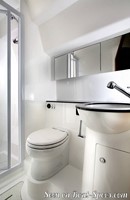

Northshore Southerly 420 interior and accommodations - - 16/17
Picture extracted from the commercial documentation © Northshore
Picture extracted from the commercial documentation © Northshore
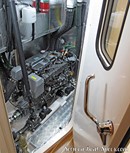

Northshore Southerly 420 detail - - 17/17
Picture extracted from the commercial documentation © Northshore
Picture extracted from the commercial documentation © Northshore
Similar sailboats that may interest you:
Sailboats
First built hull
Hull length
2012
41’ 5”12.61 m
2007
44’ 6”13.57 m
1978
45’ 4”13.8 m
1988
52’ 6”16 m
2015
40’ 8”12.4 m
2000
52’ 6”16 m
2017
50’ 11”15.51 m
2017
42’ 2”12.86 m
2019
42’ 2”12.86 m
2007
42’ 2”12.86 m
2017
47’ 4”14.43 m
2012
47’ 4”14.43 m
2019
42’ 4”12.9 m
2020
42’ 2”12.86 m
2007
35’ 6”10.82 m